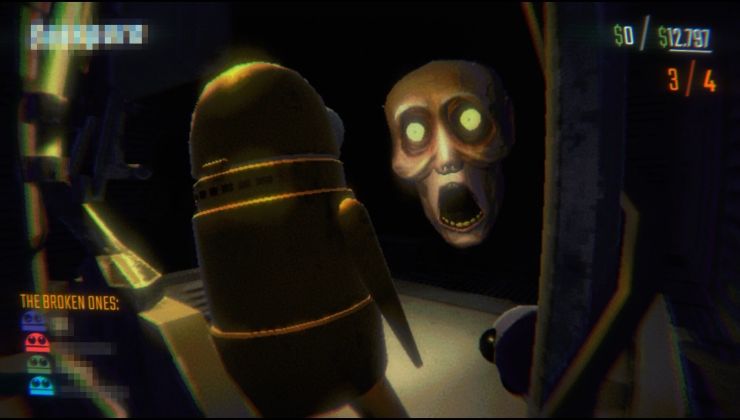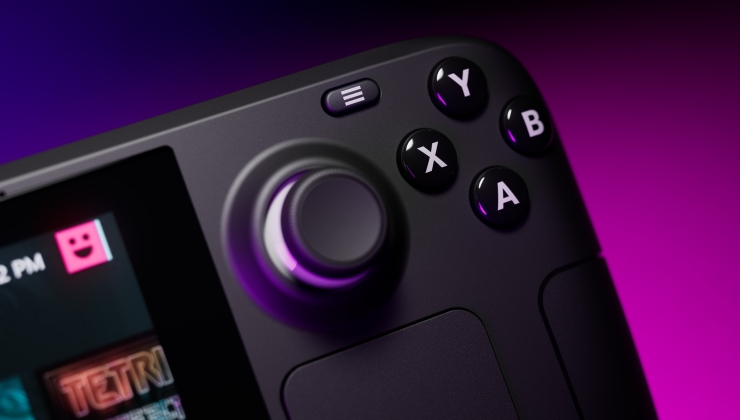KDE developer Nate Graham, who is known for writing the 'This week in KDE" blog posts keeping us up to speed on all the latest changes has a fresh update about plans for taking over the world, and Graham has some interesting things to say.
There's certainly no shortage of desktop environments on Linux and a number of ways to build software, each with their own goal and way of doing things. It's both a strength for choice and a reported weakness with so much. It's always interesting to read the point of view from developers whose work we rely on so much in the FOSS community. Especially when Graham came from a background in working with Apple, while now a KDE developer.
Here, it wasn't quite what I expected to read. The post goes over talking about the market leaders like Windows and Android, noting neither was the first to come to market but they've successfully captured the biggest slices. Noting that "Neither is picky about what kind of software you run on them or write for them, so they are used on a wide range of devices by lots of different people. Both work with others in adjacent industries, rather than taking a 'my way or the highway' approach. They are flexible."
The flexibility, Graham thinks, is the key to success.
Comparing KDE to Apple, they're clearly very different in how they do things explaining that "we’ve always dreamed of a broad scope and being useful for everyone" on why the Plasma desktop is so flexible and why "the Steam Deck handheld gaming console, PinePhone smartphone, and JingPad A1 tablet are built on top of KDE technology".
Some interesting words aimed at two other big names in the Linux space too, with Graham's post mentioning "So I think ultimately we will become the Windows or Android of the Free Open-Source Software world, with projects like GNOME and ElementaryOS competing to be the Apple of FOSS". You could easily take that as putting them in the firing line but it's more positive than that as Graham continues "I think there will absolutely be room for projects like theirs; in fact I think it’s highly likely that they’ll offer a better user experience than we do for people who fit within the usage paradigms they focus on–just like Apple does".
It's part of why I ended up moving from GNOME to KDE myself, that flexibility of setting it all up how I want it to be, not how designers think it should be. I cannot see myself moving away from Plasma as my own desktop environment on Linux any time soon. Looks good, works well and doesn't get in the way of gaming.
What are your thoughts? Will KDE and Plasma become the biggest players? Going by our own stats from users, Plasma is currently on top but GNOME is not far behind at all.
nce I've actually encountered a KDE distro that fits my taste in workflow, I fell in love with it.Which KDE distro is this? I tend to use Debian because it sets up what the project feels should be the defaults. If the Project leads could get some advice from the distros on a better default, that'd be fantastic.
Also... why have System menu, and Settings menu, then have System Settings? Should be called Preferences or something...It's in [the specification](https://specifications.freedesktop.org/menu-spec/latest/apa.html). "Preferences" could be OK for the settings of the system, but that might be confused with preferences for the menu.
I also find it buggy and clunky as well
Can you be specific? What bugs did you encounter? How is it clunky?[..]
A few things I encountered while trying different distros with various versions of KDE, from the top of my head:
- Error messages on a fresh install (I think it was Kubuntu ?)
- Error messages on the first update after a fresh install (like "missing libraries" or something like this, don't remember exactly what is was)
- I will never understand the "wait for 30 more seconds" when you decide to turn your computer off, and did not find how to change this (at least easily, I admit I didn't bother much)
- I was quite confused by the Settings panel or whatever it is called
- Overall it felt "sluggish" and not as much responsive as Cinnamon (or others I tried, like xfce and mate), even in a VM without hardware acceleration for Cinnamon
"Preferences" could be OK for the settings of the system, but that might be confused with preferences for the menu.And now I'm the one who's confused
I also find it buggy and clunky as well
Can you be specific? What bugs did you encounter? How is it clunky?[..]
A few things I encountered while trying different distros with various versions of KDE, from the top of my head:
- Error messages on a fresh install (I think it was Kubuntu ?)
- Error messages on the first update after a fresh install (like "missing libraries" or something like this, don't remember exactly what is was)
- I will never understand the "wait for 30 more seconds" when you decide to turn your computer off, and did not find how to change this (at least easily, I admit I didn't bother much)
- I was quite confused by the Settings panel or whatever it is called
- Overall it felt "sluggish" and not as much responsive as Cinnamon (or others I tried, like xfce and mate), even in a VM without hardware acceleration for Cinnamon
The bug that quickly comes to my mind, that I personnally witnessed, since switching to Kubuntu, is always happening after an update... Suddenly I can't turn off or reboot the computer. Everytime I get an error message that... I don't remember the name... just crashed. I have to ALT+F4 + CTRL-ALT-DEL to reboot. Weird, but quite similar to what Windows is doing, also after updates... It's just that the whole desktop gets frozen... The start menu doesn't answer at all... CTRL-ALT-DEL + Reboot.
Nasty. I think I may have seen this once. My favorite one with KDE in Debian Sid right now is that I seem to have to tell it to log out / reboot / power off twice before it'll actually do it. Like did it think I was joking?I also find it buggy and clunky as well
Can you be specific? What bugs did you encounter? How is it clunky?[..]
A few things I encountered while trying different distros with various versions of KDE, from the top of my head:
- Error messages on a fresh install (I think it was Kubuntu ?)
- Error messages on the first update after a fresh install (like "missing libraries" or something like this, don't remember exactly what is was)
- I will never understand the "wait for 30 more seconds" when you decide to turn your computer off, and did not find how to change this (at least easily, I admit I didn't bother much)
- I was quite confused by the Settings panel or whatever it is called
- Overall it felt "sluggish" and not as much responsive as Cinnamon (or others I tried, like xfce and mate), even in a VM without hardware acceleration for Cinnamon
The bug that quickly comes to my mind, that I personnally witnessed, since switching to Kubuntu, is always happening after an update... Suddenly I can't turn off or reboot the computer. Everytime I get an error message that... I don't remember the name... just crashed. I have to ALT+F4 + CTRL-ALT-DEL to reboot. Weird, but quite similar to what Windows is doing, also after updates... It's just that the whole desktop gets frozen... The start menu doesn't answer at all... CTRL-ALT-DEL + Reboot.
Buggy? I've not experienced a single bug.
I find it stable too, and the workspace functionality rules. But is anyone else finding the “search for app” function not working anymore?
Well, I started with Garuda, but that was a bit much, though I did learn a lot from disabling some of its effects and figuring out how they achieved their looks.nce I've actually encountered a KDE distro that fits my taste in workflow, I fell in love with it.Which KDE distro is this? I tend to use Debian because it sets up what the project feels should be the defaults. If the Project leads could get some advice from the distros on a better default, that'd be fantastic.
Then I try Feren which has a desktop layout switcher and a more subdued effects/colors. I like it better, and I like the idea of UX/desktop layout switcher a whole lot. While a full implementation like Feren would be too much for KDE defaults, I think some built-in Panel+Dock config options would be great (Budgie's implementation was pretty good for example).
The only issue is that both of them (and XeroLinux which also interest me) uses Latte dock/panel, which would be like if GNOME ship with Plank by default. But KDE officially cited Parachute and Mission Control as inspiration for their own Overview implementation, so they might ship some of Latte's functions as well (I would really love for drag titlebar via Panel and scroll workspace via Panel being official).
Last edited by fenglengshun on 17 Nov 2021 at 5:12 am UTC
The bug that quickly comes to my mind, that I personnally witnessed, since switching to Kubuntu, is always happening after an update... Suddenly I can't turn off or reboot the computer. Everytime I get an error message that... I don't remember the name... just crashed. I have to ALT+F4 + CTRL-ALT-DEL to reboot.If it's the thing I've seen, it's specifically after Nvidia updates. The version mismatch causes the shutdown widget to crash when you try to use it. You can still do
sudo shutdown -h now though.Last edited by CatKiller on 17 Nov 2021 at 7:28 am UTC
Last edited by Fredrik on 17 Nov 2021 at 9:20 am UTC
I really doubt it, its way to buggy and slow compared to gnome atm, they where catching up, but then gnome released gnome 41 and its even faster then xfce.
Are you saying XFCE is buggy and slow? Isn't XFCE known/respected as one of the faster/lighter DEs out there? And what bugs are you referring to? Have you experienced any? Because again, XFCE is ancient and fairly stable in terms of development. I'd very surprised if there were significant bugs still affecting the experience these days. When did you last try it??
The bug that quickly comes to my mind, that I personnally witnessed, since switching to Kubuntu, is always happening after an update... Suddenly I can't turn off or reboot the computer. Everytime I get an error message that... I don't remember the name... just crashed. I have to ALT+F4 + CTRL-ALT-DEL to reboot.If it's the thing I've seen, it's specifically after Nvidia updates. The version mismatch causes the shutdown widget to crash when you try to use it. You can still dosudo shutdown -h nowthough.
Not really surprised to hear that it's Nvidia related... If I didn't try to do something foolish (I'm not affraid to break an install to try new stuff), GPU drivers are the usual suspect with the majority of my issues, since day one, on Linux... And Windows too, thinking about it...
Huh, Debian just warns you when there is a kernel mismatch during the nvidia update and you'll need to reboot at your earliest convenience. I've never seen it just take down X for the fun of it.The bug that quickly comes to my mind, that I personnally witnessed, since switching to Kubuntu, is always happening after an update... Suddenly I can't turn off or reboot the computer. Everytime I get an error message that... I don't remember the name... just crashed. I have to ALT+F4 + CTRL-ALT-DEL to reboot.If it's the thing I've seen, it's specifically after Nvidia updates. The version mismatch causes the shutdown widget to crash when you try to use it. You can still dosudo shutdown -h nowthough.
I really doubt it, its way to buggy and slow compared to gnome atm, they where catching up, but then gnome released gnome 41 and its even faster then xfce. Since I am a gamer I always look for the desktop that runs the best with games, it used to be xfc but now its gnome, on my machine at home the difference is small but its there, at work on a slow i3 with integrated graphics gnome is way faster then kde in games.Sorry, but no. I'm writing this on an ultra slow Gemini Lake device with Arch, and Gnome 41 performance makes it completely unusable on both Xorg and Wayland. Plasma Wayland is far, far better optimized.
Wayland gaming is not yet a thing, as buffer modifier issues currently prevent direct scanout from working. On Xorg, you can just disable KWin compositing entirely and any game is 0 affected by Plasma.
I really doubt it, its way to buggy and slow compared to gnome atm, they where catching up, but then gnome released gnome 41 and its even faster then xfce.
Are you saying XFCE is buggy and slow? Isn't XFCE known/respected as one of the faster/lighter DEs out there? And what bugs are you referring to? Have you experienced any? Because again, XFCE is ancient and fairly stable in terms of development. I'd very surprised if there were significant bugs still affecting the experience these days. When did you last try it??
My dad wanted to put OpenSUSE with XFCE on a small laptop (it was a few month ago), but he said it was buggy and sluggish as well, so he put back the OpenSUSE KDE edition he is already using on his desktops, and everything went fine. So, there may be some configurations / hardware which cause some issue on various DE...
Ha, so their decision to not be practical (or to clean up all the extra cruft) is based upon feelings instead of good design requirements?How users feel about using an interface is part of the data gathered during UX testing. Don't exactly want to make UI that people hate to use, after all.
Also, you just showed that you didn't actually read the whole segment in the wiki page. Read the whole thing, as the quoted rationale against it isn't the only one.
Last edited by win8linux on 17 Nov 2021 at 4:36 pm UTC
Huh, Debian just warns you when there is a kernel mismatch during the nvidia update and you'll need to reboot at your earliest convenience. I've never seen it just take down X for the fun of it.It doesn't. When you try to use the panel widget to shut down, it pops up a box to ask if it's shutting down, restarting, or logging out that you're after. Spawning that window when you've got a mismatch between the library that the widget was expecting and the one it actually has causes the widget to crash before it successfully spawns the box. So you can't use that method to shut down.
Ha, yeah I'll be honest, I didn't read any of it. I usually post / read posts in small lulls during the work day. So reading design documents usually don't slip into that amount of time.Ha, so their decision to not be practical (or to clean up all the extra cruft) is based upon feelings instead of good design requirements?How users feel about using an interface is part of the data gathered during UX testing. Don't exactly want to make UI that people hate to use, after all.
Also, you just showed that you didn't actually read the whole segment in the wiki page. Read the whole thing, as the quoted rationale against it isn't the only one.
People usually like / dislike user interfaces if they don't act in logical ways. Granted what may seem logical to a programmer may not always seem logical to an end user. Even beyond that, there is just a different mentality. Programmers tend to not see any reason why you should always be running the latest. Where say an operations side person would rather their stuff be stable. I tend to be somewhere in between where I prefer to use latest stuff, but I know where / when you should run older, more proven software.
This is in KDE? Huh, weird. I have not experienced that in Gnome. I'd have to check next time there is a new nvidia driver for Sid to try that. Sounds like it's trying to make a new GL call, and since the library had changed, it just crashes. Though you'd think it'd just use whatever is in memory.Huh, Debian just warns you when there is a kernel mismatch during the nvidia update and you'll need to reboot at your earliest convenience. I've never seen it just take down X for the fun of it.It doesn't. When you try to use the panel widget to shut down, it pops up a box to ask if it's shutting down, restarting, or logging out that you're after. Spawning that window when you've got a mismatch between the library that the widget was expecting and the one it actually has causes the widget to crash before it successfully spawns the box. So you can't use that method to shut down.












 How to set, change and reset your SteamOS / Steam Deck desktop sudo password
How to set, change and reset your SteamOS / Steam Deck desktop sudo password How to set up Decky Loader on Steam Deck / SteamOS for easy plugins
How to set up Decky Loader on Steam Deck / SteamOS for easy plugins
See more from me